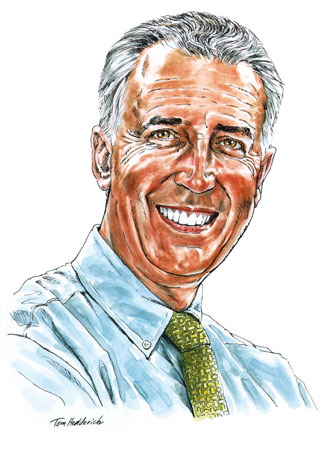Two issues are showing up on my turbulence radar screen. Both issues, in my view, will be solved by actions that are beyond the control of the executives that have created the issues.
The first issue on my radar is the business model of streaming platforms, which require a high volume of high-cost original series. The second issue concerns the business model of the many TV trade shows that are proliferating around the world.
The current streaming model is expensive, unproven, and unprofitable. However, if the streaming sector doesn’t take action, Wall Street will do it for them. After years of providing the financial resources for streaming’s extravagant model, the message in a recent Wall Street Journal front cover headline story was: “Investors Switch to Dividend Stock.”
From other publications one could glean that companies that don’t offer consistent free cash flow, like Netflix, would struggle to find the cash to return to shareholders on a quarterly basis. Companies with persistent dividend growth have provided competitive returns during periods of market volatility, and the WSJ reported that investors are “rattled by the threat of trade restrictions and a slowing economy.”
The Journal added, “The tech-heavy bets that delivered blockbuster returns in the last year’s market have faltered so far in 2025.”
Historically, dividend-paying companies have been low-growth businesses, but their ability to generate strong, recurring free cash flow and commitment to paying out consistent dividends has allowed them to outperform the market.
This recent development raises questions about those media companies that rely heavily on their streaming services, which are notoriously money-losing enterprises. Will they be able to invest in high-cost original productions? Will the number of new streaming series decline? The stock market will soon give some answers.
As for the proliferation of smaller TV trade shows that rely on seminars, conferences, and panels to attract more participants, attending the most recent TV markets in Miami and London made me realize that there is a disconnect between the market floor and the conference rooms. It looks like the conference-organizing teams are working overtime to get content buyers away from the exhibitors and into the frigid conference rooms (which are purposely kept cold in order to keep attendees awake).
In my opinion, before a conference title or description is developed, the organizers should ask themselves, “How is this going to help things on the market floor?” How will it help the buying and selling process?
Recently, event organizers were pitching a story to VideoAge about the great response that they’d gotten to a series of seminars. Our response to that was that it is our job as a trade publication to encourage market participants, and especially buyers, to be on the market floor and not away from it. Actually, this should be the job of every trade publication that is supported by exhibitors’ advertising.
What is also incomprehensible is the focus of market organizers, after the end of their trade shows, on illustrating how well-attended conferences were, ignoring the sales floor, which is the reason for the trade show’s own existence.
This model encourages content producers and distributors to simply pay for a badge in order to attend a market — and not for a stand or exhibition room — with the aim of seeing the buyers who are attracted by the seminars, and meeting them for coffee, basically chasing buyers rather than being stuck at a stand while clients are all off attending conferences.
When TV trade show organizers eventually see their market floors reduced to coffee table rooms perhaps they will then change their model and return it to the buying and selling focus of yesteryear’s events. They could also confine their conferences to a day prior to the market floor activities, or better yet, after the market, in order to keep participants onsite a bit longer.
(By Dom Serafini)
Audio Version (a DV Works service)


Right on, Dom